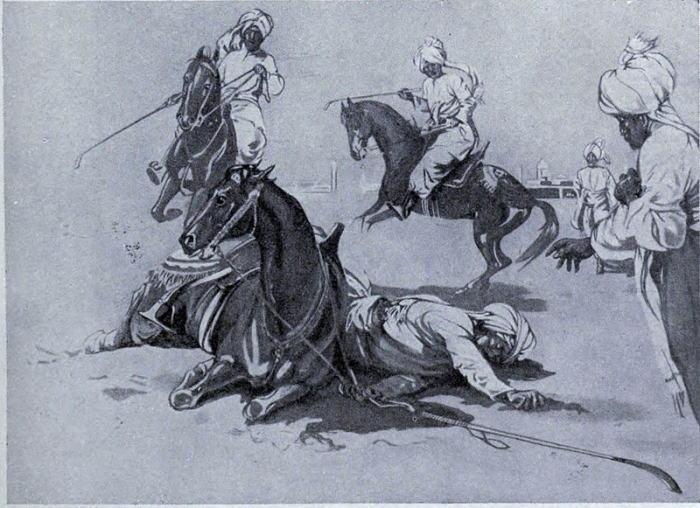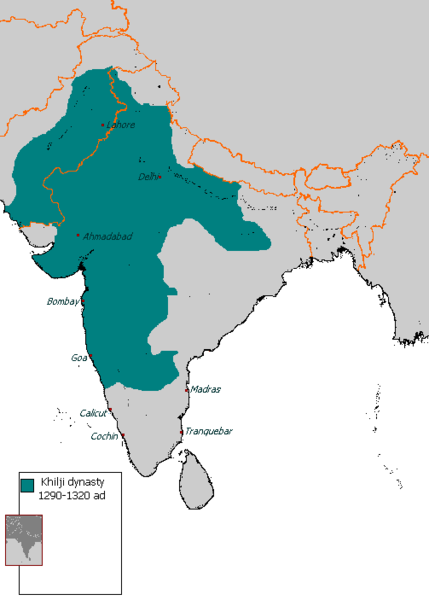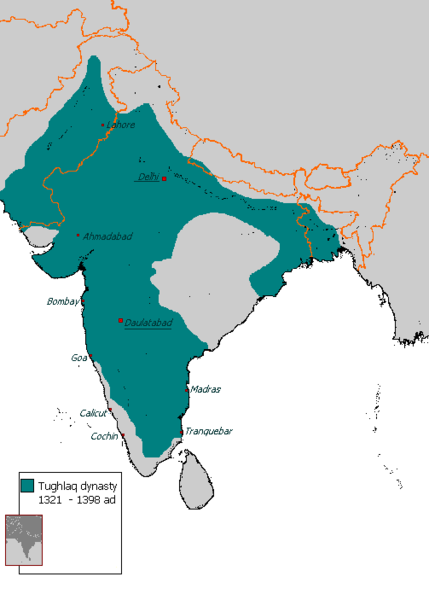

The power centres of our country have changed a number of times throughout history. Harappa, Pataliputra, Lahore, Peshawar, Kannauj, Calcutta, Agra, Bombay, Malkhed, etc have all served as the capital of a powerful empire at some point in time. But none of them match the powerful rulers of Delhi. The city first rose to prominence in the 12th century, first under the Tomara dynasty and then the Chauhans. Prithiviraj Chauhan laid the foundation of a power centre during his rule from 1175 onwards.
Eventually, the grandeur of Indian dynasties attracted foreign invaders. Prithviraj Chauhan’s loss in the 2nd Battle of Tarain laid the foundation for Muslim dynasties in India. First, the Delhi Sultanate ruled for over 300 years, followed by the Mughals. But today we will only learn about the Delhi Sultanate and its rulers.
The Delhi sultanate was officially established in 1206 CE with Qutubuddin Aibak as the first ruler. It is named so because Aibak was the slave of Mohammad Ghori who defeated Prithviraj.

Death of the Slave King
Hutchinson's story of the nations, Public domain, via Wikimedia Commons
Aibak was an able ruler and started constructing the Qutub Minar. Unfortunately, he died soon in 1210 while playing chaugan. Iltutmish, the slave of Aibak took over the throne, He completed the construction of Qutub Minar and started the reorganization of the administration. For this, he appointed a group of 40 loyal nobles known as “Chalisa”.
Iltutmish made his Raziya the ruler of the kingdom. However Chalisa was against her, she could rule only for 4 years from 1236-1240 before she was murdered. Then for a long time, the Chalisa ruled through various incapable heirs to the throne.
Finally, Ghiyasuddin Balban acquired power in 1266. He disbanded the Chalisa and restored the power of the crown. He created a powerful military and appointed spies for the empire’s stability. The kingdom was expanded after cutting the forests and building forts on the neighbour’s land. Mongols invaded India during his rule. During one of the invasions his son, Muhhamad died fighting. Since then Balban lost the will to rule and Kaiqubad was made the ruler in 1287.
Jalaluddin Khilji established the Khilji dynasty after killing Kaiqubad in 1290. Although he couldn’t rule long either as he was murdered by his nephew and son-in-law, Allauddin Khilji. Allauddin took the Sultanate to greater heights. He expanded the frontiers of the empire in every direction. He conquered Gujarat, Ranthambhor, Mewar, Malwa, and Jalor. He was the first ruler to lead successful expeditions in the South. The rulers of Devagiri, Warangal, Dwarasamudra, and Madurai were defeated.

Khilji Dynasty
Arab League at English Wikipedia, Public domain, via Wikimedia Commons
He prohibited the use of wine in the assembly and regulated the marriage between nobles himself. He also reorganized the spy system and made a powerful army to expand his empire and withstand the Mongols, who frequently invaded during his time. The system of Dagh(branding of the horse) and Chehra(descriptive role of soldiers) was introduced.
The price of the commodities was fixed and separate markets were set up for food gains; costly cloth; horses, slaves, and cattle. All goods were sold at an open market called Sara-i-Adal. He was keenly interested in art and architecture. He built the Alai Fort and the Alai Darwaza, the entrance to Qutub Minar. The Palace of a Thousand Pillars was also constructed during his reign.
The Tughlaq dynasty came to power after overthrowing Mubarak Khan(1316-20), the last Khilji ruler. Ghiyasuddin Tughlaq took over in 1320 but died soon in an accident. His son Mohammad-bin Tughlaq came to the throne and established a powerful kingdom. Mohammad-bin Tughaq’s rule was marked by extreme successes and failures. He was the first sultan to plan an invasion of Mongolia. He expanded his empire in the west and south. However, he committed a blunder by shifting the capital to Devagiri(Daulatabad) to control southern India. But had to reverse his decision as it was difficult to control the north from Daulatabad.

Tughlaq Dynasty
Arab Hafez at English Wikipedia.Later version(s) were uploaded by Beao at English Wikipedia., Public domain, via Wikimedia Commons
He created a department of agriculture, Diwan-i-Kohi. He arbitrarily fixed the taxes and cesses on agriculture, which was devastating for the farmers. The introduction of a bronze token currency with the same value as silver coins was catastrophic for the empire’s coffers. In addition to this, the Qarachila and Khurasan expedition were huge failures.
After his rule ended in 1351, Firoz shah Tughlaq came to power. He spent his entire resources on preventing the breakdown of the empire. He tried to please the Muslim nobles by collecting Jaziya from non-Muslims. The number of slaves reached a record height. All these made the kingdom unstable and eventually, it collapsed.
Firoz shah died in 1388. Meanwhile, the empire survived till 1414 before being taken over by Khizr Khan in 1414. The Sayyid dynasty could not do much as they were new to India and quickly descended the throne in favor of the Lodhi dynasty in 1451.
Bahlol Lodhi was the first emperor of the Lodhi dynasty ruling from 1451 to 1488. He was succeeded by Sikandar Lodhi in 1489, Sikander was the most significant ruler of the Lodhi dynasty. He shifted the capital from Delhi to Agra, a city founded by him. He introduced Gaz-i-Sikandari for the measurement of cultivated lands. He was also a poet and composed poems in Persian. Moth Ki Masjid was made during his rule by one of his ministers.
Ibraham Lodhi was the last ruler of the Lodhi dynasty ruling from(1517-26-) and the Delhi Sultanate, as he was defeated by Babur in the 1st Battle of Panipat in 1526. Thus began the Mughal empire.
The Delhi Sultanate is a paramount power in Indian history. It was the first empire to rule almost the entire subcontinent after the Mauryas and Guptas. They played a key role in establishing a link between the Indian and Turkik states. From Iltutmish to Sikandar Lodhi all the rulers tried to grow their boundaries and economies through treaties and invasions. Even after their fall in Panipat glimpses of their rule still survived for centuries to come in India.
Q1. When was the 2nd battle of Panipat fought?
Ans. The 2nd battle of Panipat was fought in 1556. Akbar’s army defeated Hemu in the fight to consolidate his empire.
Q2. Arrange the following rulers in chronological order- Humayun, Aurangzeb, Jahangir, Akbar, Shah Jahan.
Ans. The chronological order of the rulers are- Humayan(1530-40, 1555-56), Akbar(1556-1605), Jahangir(1605-1627), Shah Jahan(1627-1658) , Aurangzeb(1659- 1707).
Q3. Where is the Adai din ka Jhonpra?
Ans. Adhai Din ka Jhonpra was designed by Abu Bakr of Herat in Ajmer, Rajasthan. It was completed in 1199 CE but was further enhanced by Iltutmish.
Q4. Who was the first Muslim to invade India?
Ans. The first Muslim invader of India was Mohammad bin Qasim. He attacked in 711 CE and conquered Sindh.
Q5. What were the different architectural designs introduced during the Delhi Sultanate?
Ans. The rulers of the Delhi sultanate added many architectural designs to the Indian landscape like- the dome, lofty towers, true arch unsupported by beams, and the vault.